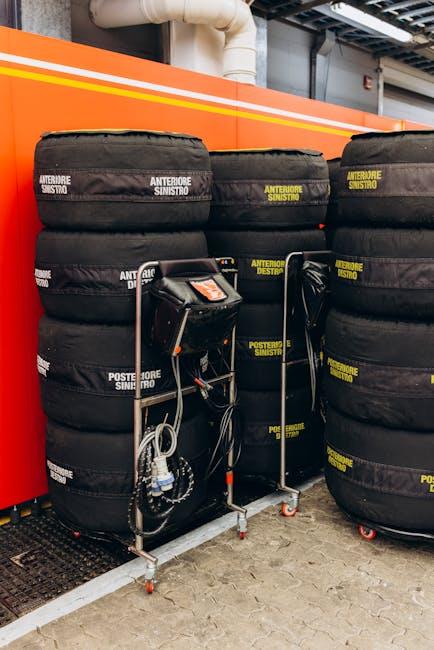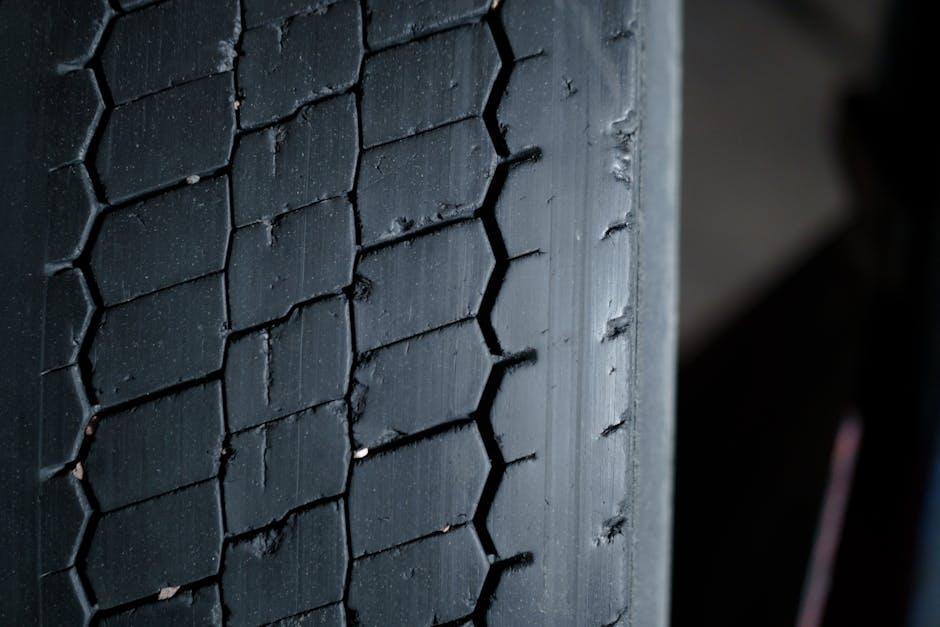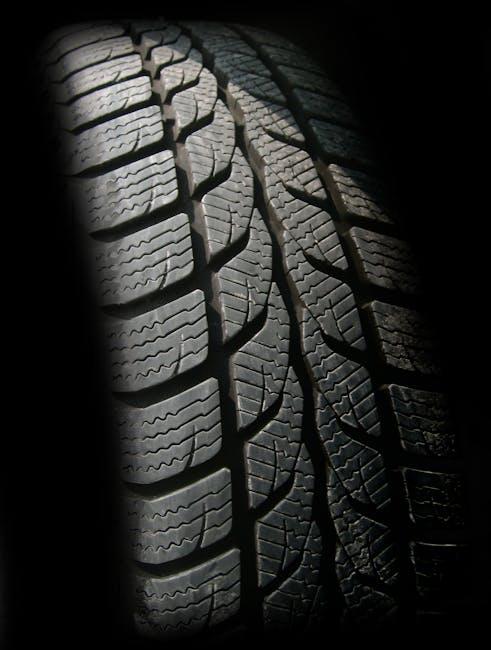Embarking on a long drive can be an exhilarating escape, a chance to explore new horizons or reconnect with familiar paths. Yet, amid the thrill of the open road, one vital factor often goes unnoticed: tire safety. Your tires are the only contact between your vehicle and the road, making their condition and maintenance crucial for a smooth, secure journey. Whether you’re cruising through highways or navigating winding country lanes, understanding tire safety can transform your trip from a potential hazard into a harmonious adventure. This article dives into essential tire safety tips that ensure your long drive remains both enjoyable and safe.
Table of Contents
- Preparing Your Tires for the Journey Ahead
- Understanding Tire Pressure and Its Impact on Safety
- The Importance of Tread Depth for Traction and Control
- Spotting Signs of Tire Wear and Damage Before You Drive
- Choosing the Right Tires for Different Road Conditions
- Maintaining Tire Health During and After Long Drives
- Q&A
- In Conclusion

Preparing Your Tires for the Journey Ahead
Before setting off on a long drive, ensuring your tires are in optimal shape is crucial for a smooth and safe journey. Start by checking the tire pressure with a reliable gauge, as improper inflation can lead to uneven wear, reduced fuel efficiency, and increased risk of blowouts. Remember, tire pressure should be checked when the tires are cold, and adjusted according to the manufacturer’s recommended levels found in your vehicle’s manual or door frame sticker.
Next, inspect the tread depth and search for any visible damage such as cuts, bulges, or embedded objects. Adequate tread depth improves traction, especially in wet conditions, and helps maintain control on the road. Here’s a quick reference table to help you assess your tire tread depth:
| Tread Depth (mm) | Condition | Action |
|---|---|---|
| Above 3 | Good | Ready for the journey |
| Between 1.6 – 3 | Worn | Consider replacement soon |
| Below 1.6 | Unsafe | Replace immediately |
- Rotate your tires regularly to promote even wear across all four.
- Check the spare tire for proper inflation and condition.
- Balance and align tires if you experience vibrations or pulling to one side.

Understanding Tire Pressure and Its Impact on Safety
Maintaining the correct tire pressure is a fundamental aspect of vehicle safety, especially before embarking on long drives. Tires that are underinflated can cause sluggish handling, increased wear, and even overheating, which raises the risk of tire blowouts. Conversely, overinflated tires may reduce traction and create a harsher ride, compromising your control on varying road surfaces. It’s essential to check your tire pressure regularly using a reliable gauge and inflate tires according to the manufacturer’s recommended levels, typically found on the driver’s door jamb or in the owner’s manual.
Understanding how tire pressure impacts safety extends beyond just measurement; it affects fuel efficiency, braking distance, and overall vehicle performance. Below is a quick reference table illustrating the core impacts of improper tire pressure:
| Pressure Condition | Safety Impact | Performance Effect |
|---|---|---|
| Underinflated | Higher risk of blowouts & poor handling | Decreased fuel efficiency & uneven tire wear |
| Optimal | Maximum traction and safety | Balanced fuel economy & tire longevity |
| Overinflated | Reduced grip & harsher ride | Quicker tread wear & reduced shock absorption |
- Always check tire pressure cold: Tires heat up during driving, increasing pressure temporarily.
- Inspect your spare tire too: It’s often forgotten and can be improperly inflated.
- Adjust pressure for load: Carrying extra weight may require additional PSI for safety.

The Importance of Tread Depth for Traction and Control
Maintaining adequate tire tread depth is crucial for ensuring optimal traction and control, especially during long drives where road conditions can vary dramatically. Deep treads are designed to channel water away from the tire’s surface, minimizing the risk of hydroplaning on wet roads. When tread depth wears down, the tire’s grip diminishes significantly, making it harder to accelerate, brake, and navigate turns safely. This subtle but essential feature of tires directly impacts your vehicle’s stability and responsiveness, providing the confidence needed to handle sudden changes in the road.
Regularly checking tread depth can prevent unexpected loss of control during your journey. For a quick assessment, you can use the common “penny test”: insert a penny into the tread groove with Lincoln’s head upside down—if you can see the top of his head, it’s time to replace your tires. Additionally, consider these points to maintain proper traction:
- Rotate tires every 5,000-8,000 miles to even out wear.
- Monitor tire pressure to ensure contact patches perform optimally.
- Inspect for uneven wear which may indicate alignment or suspension issues.
| Minimum Safe Tread Depth | Effect on Traction | Condition |
|---|---|---|
| 6/32 inch | Excellent grip | New tires |
| 4/32 inch | Reduced wet traction | Moderate wear |
| 2/32 inch | Risk of hydroplaning | Legal limit, unsafe |

Spotting Signs of Tire Wear and Damage Before You Drive
Before hitting the road for those long journeys, taking a moment to inspect your tires can save you from unexpected trouble. Look for uneven tread wear, such as smooth patches or exposed belts, which indicate potential alignment or inflation issues. Check the tire sidewalls for any bulges, cracks, or cuts that could compromise the tire’s structural integrity. Even a small puncture, if not addressed, can turn into a dangerous hazard at high speeds.
Don’t forget to run your hands over the tire surface to detect embedded objects like nails or glass shards. As a quick reference, keep an eye on the tread depth using a coin test or a tread depth gauge; anything below 2/32 inch is a sign it’s time to replace your tire. Remember these quick checks:
- Uneven wear patterns — indicates alignment or pressure problems
- Sidewall damage — cracks, bulges, or cuts
- Foreign objects — nails, glass, stones embedded
- Tread depth — minimum safe threshold 2/32 inch
| Sign of Wear | Possible Cause | Action |
|---|---|---|
| Center Tread Wear | Overinflation | Reduce tire pressure to recommended level |
| Edge Tread Wear | Underinflation | Inflate tires properly |
| One-Sided Wear | Misalignment | Get alignment checked |

Choosing the Right Tires for Different Road Conditions
Selecting the ideal tires means tailoring your choice to the specific terrain you’ll encounter. For smooth highways and urban roads, all-season tires offer a balanced mix of comfort, durability, and traction. If your journey includes rugged or uneven paths, all-terrain tires provide enhanced grip and resilience, ensuring safety without sacrificing performance. For wet or rainy climates, those with deeper treads and water-dispersing grooves help prevent hydroplaning, maintaining stable contact on slippery surfaces.
Understanding tire characteristics can simplify your selection process. Consider this quick guide to match tire types with common road scenarios:
| Road Condition | Recommended Tire | Key Feature |
|---|---|---|
| Highway & City Streets | All-Season Tires | Balanced grip and comfort |
| Off-Road or Dirt Trails | All-Terrain Tires | Durable tread for rough surfaces |
| Wet or Rainy Conditions | Wet Traction Tires | Hydroplaning resistance |
| Snow & Ice | Winter Tires | Enhanced grip on slippery ice |
- Check tread depth regularly for optimal safety
- Rotate tires every 5,000 to 7,000 miles
- Match tire pressure to manufacturer recommendations
- Replace tires before excessive wear affects performance

Maintaining Tire Health During and After Long Drives
After enduring miles on the open road, your tires deserve a moment of attention to ensure longevity and safety. Begin by visually inspecting for any signs of damage such as cuts, bulges, or embedded debris that might have found a home during the drive. Underinflated tires increase wear and fuel consumption, so checking and adjusting tire pressure to the manufacturer’s recommended levels is crucial. Proper inflation maintains the tire’s optimal footprint on the road, promoting even wear and preventing blowouts. Remember, tires heat up during long drives, so allow them to cool before taking accurate pressure readings.
Equally important is the tread depth; worn-out treads can severely compromise grip, especially in wet conditions. Use a tread depth gauge or the penny test to quickly assess this. For added convenience, refer to the table below that outlines the ideal tread depth ranges and corresponding action steps:
| Tread Depth (mm) | Condition | Recommended Action |
|---|---|---|
| > 6 mm | Good | Continue regular maintenance |
| 3 – 6 mm | Moderate Wear | Increase inspection frequency |
| < 3 mm | Critical | Replace immediately |
Finally, balance and alignment should never be overlooked, as long drives can exacerbate existing misalignments or imbalances, causing uneven wear patterns and vibrations. Regularly rotating your tires is another beneficial step to distribute wear evenly, ultimately extending the life of your tires and enhancing your driving experience. Keep a checklist handy for quick post-drive tire care:
- Inspect for physical damages
- Check and adjust tire pressure
- Measure tread depth
- Plan regular rotation and alignment checks
Q&A
Q&A: Tire Safety Tips for Long Drives
Q1: Why is tire safety especially important for long drives?
A1: On long drives, your tires endure extended stress from continuous road contact, varying temperatures, and potential road hazards. Ensuring they’re in good shape helps prevent blowouts, improves fuel efficiency, and keeps you in control throughout your journey.
Q2: How often should I check my tire pressure before a long trip?
A2: Ideally, check your tire pressure at least once before you hit the road and recheck it every few hours during your trip if possible. Proper inflation reduces wear and improves handling, so a quick pressure gauge check is a smart habit.
Q3: Can worn tires really affect long drive safety?
A3: Absolutely. Tires with worn treads have less grip, increasing stopping distances and vulnerability to hydroplaning in wet conditions. Long drives mean different road surfaces and weather scenarios—fresh tread is your best friend.
Q4: What’s the best way to inspect tires before a long drive?
A4: Start with a visual check for cuts, cracks, bulges, or embedded objects. Next, measure tread depth — a minimum of 2/32 inches is necessary, but more tread is better for safety. Also, ensure your spare tire is ready to roll.
Q5: How does tire rotation help with long drive safety?
A5: Regular tire rotation promotes even wear, which helps maintain consistent traction and extends tire life. While this isn’t something you do right before a trip, keeping rotations up to date means your tires are ready when you are.
Q6: Should I consider the tire type for a long road trip?
A6: Yes. All-season tires are versatile, but if you’re driving through snow or off-road terrain, specialized tires can vastly improve safety. Matching tire type to your route conditions ensures better grip and durability.
Q7: How do external factors like load and speed impact tire safety during long drives?
A7: Carrying extra weight or speeding increases tire heat and wear, raising the chance of failures. Distribute cargo evenly, don’t overload your vehicle, and stick to recommended speed limits to keep your tires happy and functional.
Q8: What should I do if I notice a tire issue mid-drive?
A8: If you suspect a problem, like a sudden vibration, noise, or loss of control, safely pull over and inspect your tires immediately. If a repair isn’t possible, call roadside assistance rather than risking damage or accidents.
Q9: Are there any tire care products recommended for long trips?
A9: Tire sealants can be handy for minor punctures, but they’re not a substitute for proper repairs. Some drivers use tire pressure monitoring systems (TPMS) to stay informed in real time, which can be a great investment for peace of mind.
Q10: What’s the key takeaway for tire safety on long drives?
A10: Prioritize tire condition and pressure, plan for the journey conditions, and don’t ignore warning signs. Safe tires mean a safer, smoother, and more enjoyable road adventure. Always remember: your journey is only as good as the tires beneath you.
In Conclusion
As you hit the open road, remember that your tires are the unsung heroes of every mile. Keeping them in top shape isn’t just about longevity—it’s about your safety, comfort, and peace of mind. By embracing these tire safety tips, you’re not just preparing your vehicle for the journey ahead; you’re investing in a smoother, safer adventure. So, before you turn the key and start that engine, take a moment to check your tires—they’ll thank you with every mile traveled. Safe travels!

